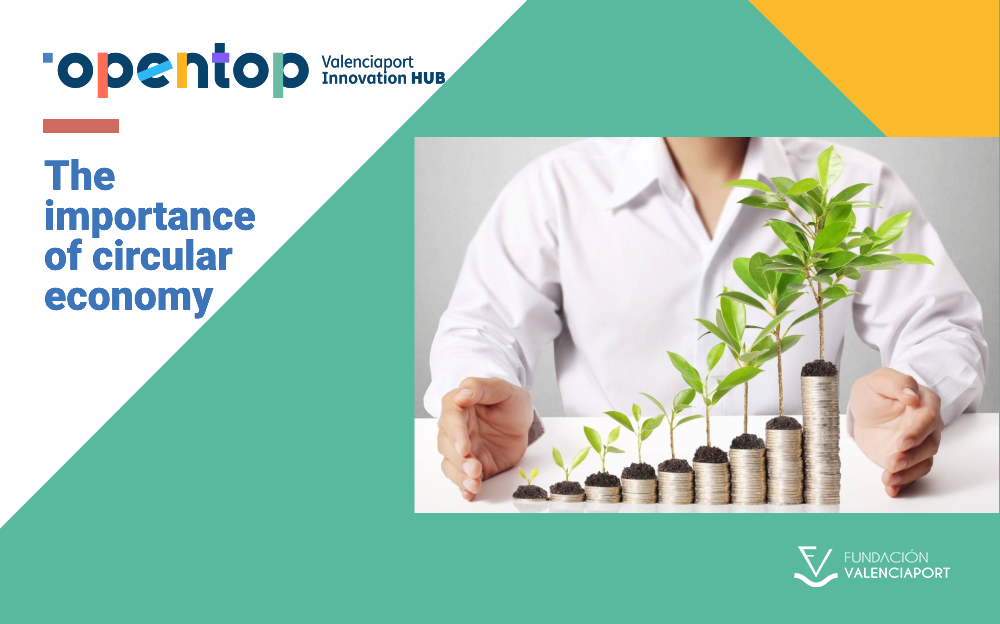LATEST NEWS
The importance of circular economy
Have you ever heard about the circular economy? Do you know why it is important?
As you already know, at Opentop we are aligned with the objectives and challenges addressed by the circular economy, promoting sustainable and impactful challenges, such as the latest ones launched in our last IV Valenciaport hackathon or in our Business Growth Program.
Therefore, in this post we will take a closer look at the circular economy so you can understand it.
What is the circular economy?
This concept is defined by the European Parliament as a new model of production and consumption which involves sharing, leasing, reusing, repairing, refurbishing and recycling materials and products as long as you can. So this model can be summarized as making the most of the resources available by applying three principles: reduce, reuse and recycle, commonly referred to as the three R’s.
Therefore, in a market dominated by a linear economy model based on use and disposal, the circular economy emerges with the objective of extending the life cycle of the products, reducing the consumption of raw materials and reducing waste to the minimum. This idea comes from imitating nature, where everything is used.
The circular economy is of great importance because of its potential to address some of the most pressing environmental and economic challenges of our time. The global population is growing and, with it, the demand for raw materials is also increasing, but these are limited. This also means that some countries depend on the raw materials of others, and, lastly, extracting these resources has a negative impact on the environment, increasing CO2 emissions. Thus, a smarter use of these resources applying the principles of a circular economy could reduce this damage to the environment.
As we have seen, this model brings many benefits to the environment, but also to your company since it can reduce the costs, improve the competitiveness, attract investment, increase innovation, improve your reputation or open new opportunities.
How to implement circular economy
If you want to implement the circular economy in your company the first thing is to be committed to its principles and integrate it in the whole value chain. This involves rethinking how products are designed, produced, distributed and consumed. Once done this, you have to establish objectives that are limited in time, clear and realistic. These will guide your efforts and help you measure progress. Now it is time to discover some strategies that can help you in this process:
- Go paperless. You can make a transition in your company to become paperless and use digitized files.
- Use reusable bottles and other utensils in your office and incentivize your employees to do the same.
- Ecodesigning. Design products with the entire life cycle in mind, ensuring they are durable, easy to repair, and recyclable. This reduces waste and makes it easier to recover valuable materials at the end of a product’s life. Moreover, this should be applied not only to the design of the products, but also to their packaging.
- Technology. Technology has a crucial role in the circular economy. Using the Internet of Things, artificial intelligence or data analytics can improve the management of the resources and facilitate the monitoring of the life cycle of the products.
As we can see, the circular economy prioritizes resource efficiency and waste reduction, something that didn’t occur with the linear model. This new model that redefines our approach to production and consumption is a way to protect the environment while driving economic growth and innovation. And you, do you dare to implement it in your company?




